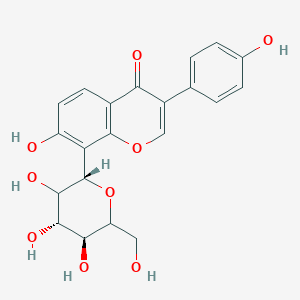| MeSH term | MeSH ID | Detail |
|---|---|---|
| Alcohol-Related Disorders | D019973 | 3 associated lipids |
| Lead Poisoning | D007855 | 4 associated lipids |
| Urinary Incontinence | D014549 | 4 associated lipids |
| Dyspepsia | D004415 | 5 associated lipids |
| Hepatitis, Alcoholic | D006519 | 5 associated lipids |
| Hypertension, Renovascular | D006978 | 10 associated lipids |
| Amnesia | D000647 | 12 associated lipids |
| Glucose Intolerance | D018149 | 13 associated lipids |
| Angina, Unstable | D000789 | 14 associated lipids |
| Brain Infarction | D020520 | 17 associated lipids |
| Angina Pectoris | D000787 | 27 associated lipids |
| Ventricular Remodeling | D020257 | 28 associated lipids |
| Endometriosis | D004715 | 29 associated lipids |
| Stroke | D020521 | 32 associated lipids |
| Memory Disorders | D008569 | 33 associated lipids |
| Neurotoxicity Syndromes | D020258 | 34 associated lipids |
| Cataract | D002386 | 34 associated lipids |
| Burns | D002056 | 34 associated lipids |
| Fever | D005334 | 35 associated lipids |
| Infarction, Middle Cerebral Artery | D020244 | 35 associated lipids |
SCHEMBL105486
Kakonein is a lipid of Polyketides (PK) class. Kakonein is associated with abnormalities such as Fatty Liver, Chronic liver disease, Morphologically altered structure, Hypertensive disease and Cardiovascular Diseases. The involved functions are known as protein expression, Extravasation, Liver damage, mRNA Expression and cell activation. Kakonein often locates in Body tissue, Hepatic, Microvilli, Cytoplasm and Membrane. The associated genes with Kakonein are TJP1 gene, CD14 gene, iberiotoxin, AT-Rich Interactive Domain-Containing Protein 1A and NKS1 gene. The related lipids are dehydrosoyasaponin I and Steroids. The related experimental models are Knock-out.
Cross Reference
Introduction
To understand associated biological information of SCHEMBL105486, we collected biological information of abnormalities, associated pathways, cellular/molecular locations, biological functions, related genes/proteins, lipids and common seen animal/experimental models with organized paragraphs from literatures.
What diseases are associated with SCHEMBL105486?
SCHEMBL105486 is suspected in Chronic liver disease, Hypertensive disease, Cardiovascular Diseases, Myocardial Infarction, Cerebrovascular accident, Fatty Liver and other diseases in descending order of the highest number of associated sentences.
Related references are mostly published in these journals:
| Disease | Cross reference | Weighted score | Related literature |
|---|
Possible diseases from mapped MeSH terms on references
We collected disease MeSH terms mapped to the references associated with SCHEMBL105486
PubChem Associated disorders and diseases
What pathways are associated with SCHEMBL105486
There are no associated biomedical information in the current reference collection.
PubChem Biomolecular Interactions and Pathways
Link to PubChem Biomolecular Interactions and PathwaysWhat cellular locations are associated with SCHEMBL105486?
Visualization in cellular structure
Associated locations are in red color. Not associated locations are in black.
Related references are published most in these journals:
| Location | Cross reference | Weighted score | Related literatures |
|---|
What functions are associated with SCHEMBL105486?
Related references are published most in these journals:
| Function | Cross reference | Weighted score | Related literatures |
|---|
What lipids are associated with SCHEMBL105486?
Related references are published most in these journals:
| Lipid concept | Cross reference | Weighted score | Related literatures |
|---|
What genes are associated with SCHEMBL105486?
Related references are published most in these journals:
| Gene | Cross reference | Weighted score | Related literatures |
|---|
What common seen animal models are associated with SCHEMBL105486?
Knock-out
Knock-out are used in the study 'MATE2 mediates vacuolar sequestration of flavonoid glycosides and glycoside malonates in Medicago truncatula.' (Zhao J et al., 2011).
Related references are published most in these journals:
| Model | Cross reference | Weighted score | Related literatures |
|---|
NCBI Entrez Crosslinks
All references with SCHEMBL105486
Download all related citations| Authors | Title | Published | Journal | PubMed Link |
|---|---|---|---|---|
| Song X et al. | Restoration of autophagy by puerarin in lead-exposed primary rat proximal tubular cells via regulating AMPK-mTOR signaling. | 2017 | J. Biochem. Mol. Toxicol. | pmid:27762461 |
| Sun H et al. | Simultaneous determination of epalrestat and puerarin in rat plasma by UHPLC-MS/MS: Application to their pharmacokinetic interaction study. | 2017 | Biomed. Chromatogr. | pmid:27650591 |
| Li W et al. | Puerarin attenuates the daunorubicin-induced apoptosis of H9c2 cells by activating the PI3K/Akt signaling pathway via the inhibition of Ca2+ influx. | 2017 | Int. J. Mol. Med. | pmid:29039532 |
| Yao Y et al. | Puerarin inhibits β‑amyloid peptide 1‑42‑induced tau hyperphosphorylation via the Wnt/β‑catenin signaling pathway. | 2017 | Mol Med Rep | pmid:28990074 |
| Tu YM et al. | A high concentration of fatty acids induces TNF-α as well as NO release mediated by the P2X4 receptor, and the protective effects of puerarin in RAW264.7 cells. | 2017 | Food Funct | pmid:28937704 |
| Jing S et al. | A novel electrochemical sensor based on WO nanorods-decorated poly(sodium 4-styrenesulfonate) functionalized graphene nanocomposite modified electrode for detecting of puerarin. | 2017 | Talanta | pmid:28738611 |
| Gao Y et al. | An isoflavonoid-enriched extract from Pueraria lobata (kudzu) root protects human umbilical vein endothelial cells against oxidative stress induced apoptosis. | 2016 | J Ethnopharmacol | pmid:27717903 |
| Song XB et al. | Puerarin protects against cadmium-induced proximal tubular cell apoptosis by restoring mitochondrial function. | 2016 | Chem. Biol. Interact. | pmid:27717697 |
| Luo X et al. | Puerarin Exerts a Delayed Inhibitory Effect on the Proliferation of Cardiomyocytes Derived from Murine ES Cells via Slowing Progression through G2/M Phase. | 2016 | Cell. Physiol. Biochem. | pmid:27008508 |
| Jiang QD and Li XP | Effect of puerarin on the expression of NMU, NPY, and POMC genes in the hypothalamus. | 2016 | Genet. Mol. Res. | pmid:26985919 |
